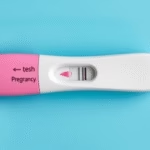Understanding Implantation Bleeding and HCG Levels
In this discussion, we will talk about implantation bleeding and HCG levels. Implantation bleeding refers to light spotting that can occur when a fertilized egg attaches to the lining of the uterus. This event usually takes place around 6 to 12 days post-conception. Many individuals confuse implantation bleeding with their typical menstrual period, but the characteristics differ. Unlike menstrual blood, implantation bleeding is usually light pink or brown, and it lasts for a shorter duration—just a few hours to a couple of days.
Hormonal changes come into play as well, notably Human Chorionic Gonadotropin (HCG) levels. HCG is a hormone produced by the placenta shortly after the embryo attaches to the uterine lining. Monitoring HCG levels can help ascertain pregnancy status, as levels typically rise rapidly during early pregnancy. Testing for HCG can confirm whether implantation has indeed taken place and can aid in understanding the progressing health of the pregnancy. Low or declining HCG levels may indicate potential issues, so understanding both implantation bleeding and HCG levels is crucial for expecting parents.
The Connection Between Implantation Bleeding and HCG Levels
The connection between implantation bleeding and HCG levels is vital for understanding early pregnancy signs. As the fertilized egg attaches to the uterine lining, it triggers the release of HCG. This hormone plays a critical role in the early stages of pregnancy, helping to maintain the corpus luteum, which produces necessary hormones to support the pregnancy.
Many individuals may notice the onset of implantation bleeding around the same time they would expect their menstrual period. HCG levels begin to rise rapidly during this phase, which may cause some women to misinterpret the light spotting as a lighter-than-normal menstrual cycle. However, as time passes and HCG levels continue to rise, other symptoms like missed periods, nausea, or breast tenderness may start appearing.
It is essential to monitor HCG levels if implantation bleeding occurs. A blood test or home pregnancy test can help determine if pregnancy is progressing normally. In a healthy pregnancy, HCG levels typically double every 48 to 72 hours within the first few weeks.
Signs and Symptoms of Implantation Bleeding
Recognizing the signs and symptoms of implantation bleeding is crucial for those who are trying to conceive. Some of the common characteristics of implantation bleeding include:
In addition, some women may experience mild cramping during implantation bleeding as the embryo attaches to the uterine wall. This cramping is usually less severe than menstrual cramps. Understanding these signs can help determine whether a pregnancy is underway.
If you notice any signs of implantation bleeding along with other symptoms such as breast tenderness or frequent urination, it may be worth taking a pregnancy test or consulting a healthcare provider.
Differentiating Implantation Bleeding from Menstrual Bleeding
Understanding how to differentiate implantation bleeding from menstrual bleeding can ease the concerns of those who are trying to conceive. Here are key differences to consider:
Keeping track of your menstrual cycle can help identify unusual changes and assist in better recognizing potential implantation bleeding. It may also be beneficial to keep a log or use an app to track symptoms if you are trying to conceive.
Understanding HCG Levels in Early Pregnancy
Understanding HCG levels in early pregnancy is important for confirming and monitoring pregnancy. HCG is generally detectable in urine or blood tests about 10 to 14 days after conception. However, timing can vary from individual to individual.
Normal HCG levels will vary, but on average, here is a rough guideline:
- 3 weeks: 5 to 50 mIU/mL
- 4 weeks: 10 to 425 mIU/mL
- 5 weeks: 100 to 5,000 mIU/mL
- 6 weeks: 1,500 to 32,000 mIU/mL
- 7 to 8 weeks: 10,000 to 200,000 mIU/mL
These levels typically peak between 8 and 11 weeks of pregnancy before declining and stabilizing. Tracking these levels can provide insight into the health of the pregnancy. If a woman experiences low levels of HCG along with symptoms such as heavy bleeding or severe cramping, she should contact her healthcare provider immediately.
What Happens If HCG Levels Are Low After Implantation Bleeding?
If HCG levels are low after experiencing implantation bleeding, it could indicate underlying problems. Low HCG levels may signal a possible miscarriage or ectopic pregnancy. In a healthy pregnancy, HCG levels are expected to increase, so any significant decrease or stagnation may require further assessment, including blood tests or ultrasounds.
Common reasons for low HCG levels may include:
Consulting with a healthcare provider for guidance and monitoring is essential if concerns about HCG levels arise. Early intervention can help in managing complications more effectively.
Common Tests to Monitor HCG Levels
Monitoring HCG levels involves two primary types of tests: urine tests and blood tests. Both serve different purposes during early pregnancy.
Regular follow-up with your healthcare provider is essential if you are trying to conceive or suspect pregnancy. They can create a monitoring plan tailored to your individual needs.
Final Thoughts
Understanding implantation bleeding and HCG levels is critical in the early stages of pregnancy. Implantation bleeding can be a sign of successful conception, while HCG levels provide insight into the health status of the pregnancy. Recognizing the signs of implantation bleeding, differentiating it from menstrual bleeding, and monitoring HCG levels can help in making informed decisions and providing peace of mind.
It is important to consult healthcare providers for any concerns regarding HCG levels or unusual bleeding. Early intervention can make a significant difference in pregnancy outcomes. Keeping a log of symptoms and menstrual cycles can also help in identifying significant changes, making it easier to communicate with healthcare providers.
Pregnancy is a profound journey filled with a range of emotions and experiences. By remaining informed and vigilant about signs and symptoms related to implantation bleeding and HCG levels, expecting individuals can increase their understanding and effectively address concerns.
Frequently Asked Questions
1. What is implantation bleeding?
Implantation bleeding occurs when a fertilized egg attaches to the lining of the uterus, leading to light spotting.
2. How can I differentiate implantation bleeding from my period?
Implantation bleeding is typically lighter, shorter in duration, and the color is often pink or brown, unlike the typical bright red menstrual blood.
3. What do HCG levels indicate during early pregnancy?
HCG levels indicate the status of a pregnancy. Rising HCG levels are generally a sign of a healthy pregnancy, while low or declining levels may signal complications.
4. When should I take a pregnancy test after implantation bleeding?
It is recommended to take a pregnancy test at least a week after suspected implantation bleeding for the most accurate results.
5. What should I do if my HCG levels are low after implantation bleeding?
If HCG levels are low, consult with a healthcare provider immediately for further evaluation and guidance.
Further Reading
What Type of Psychotherapy Is Best for Anxiety?







